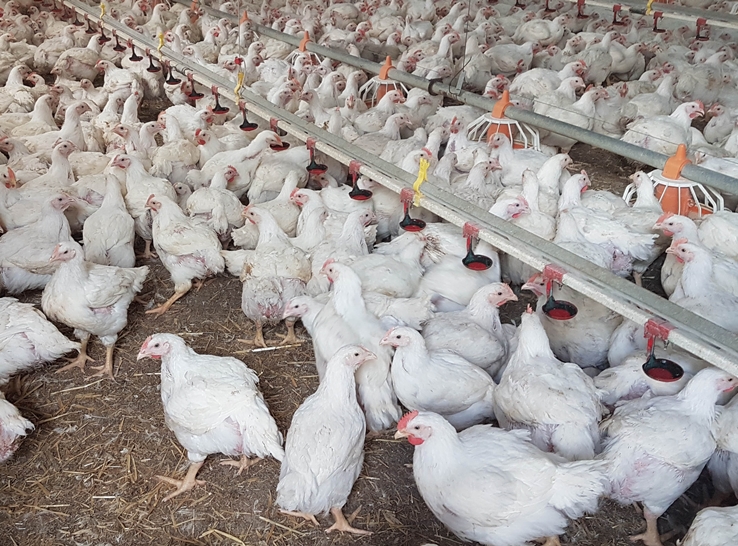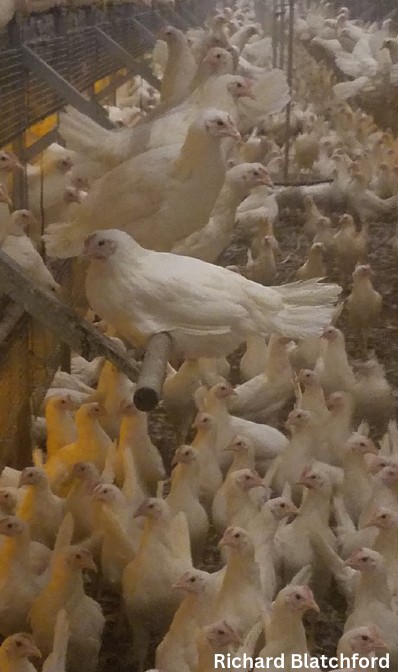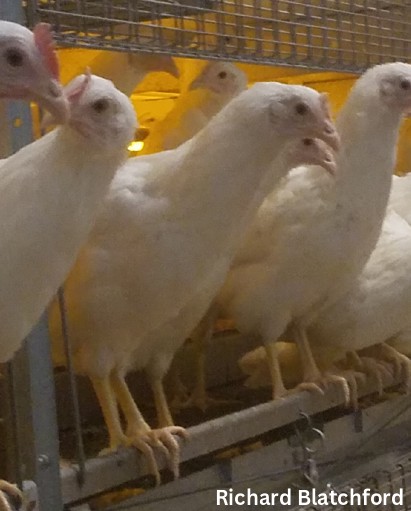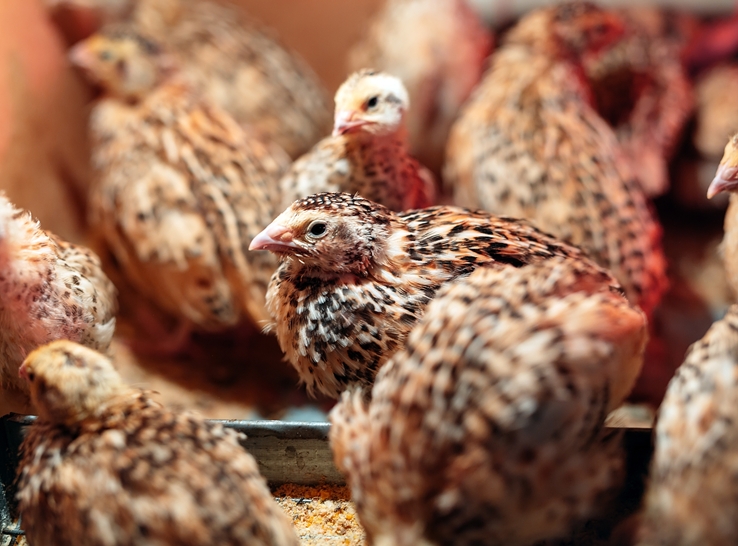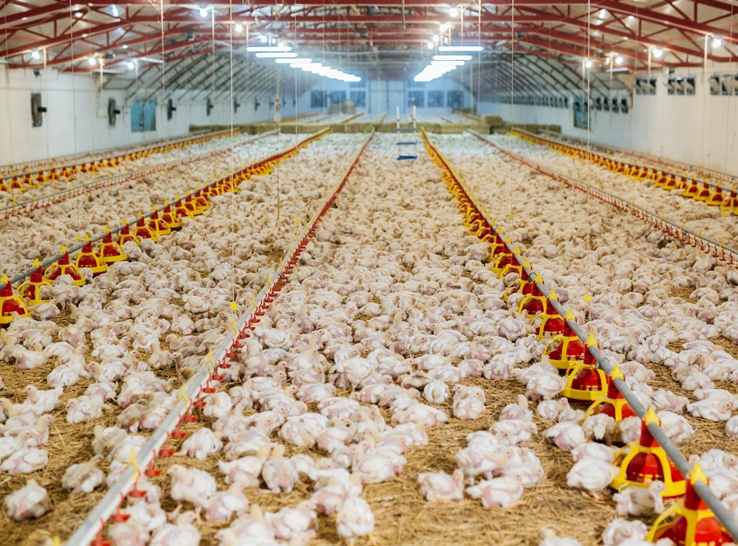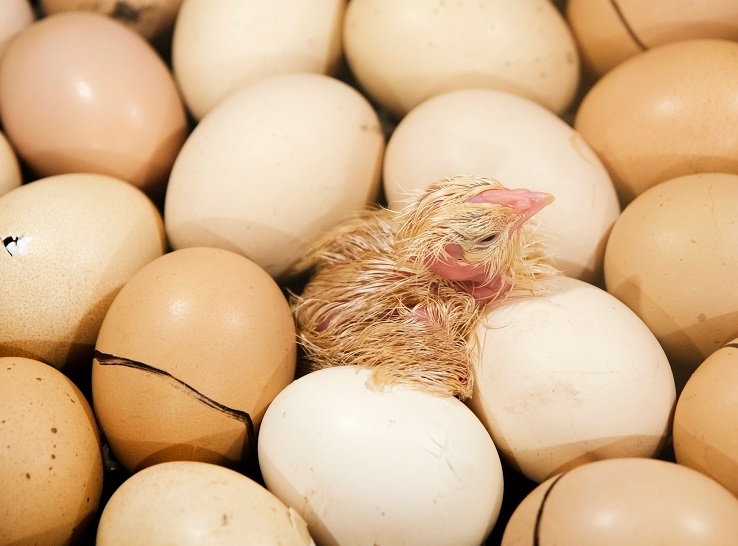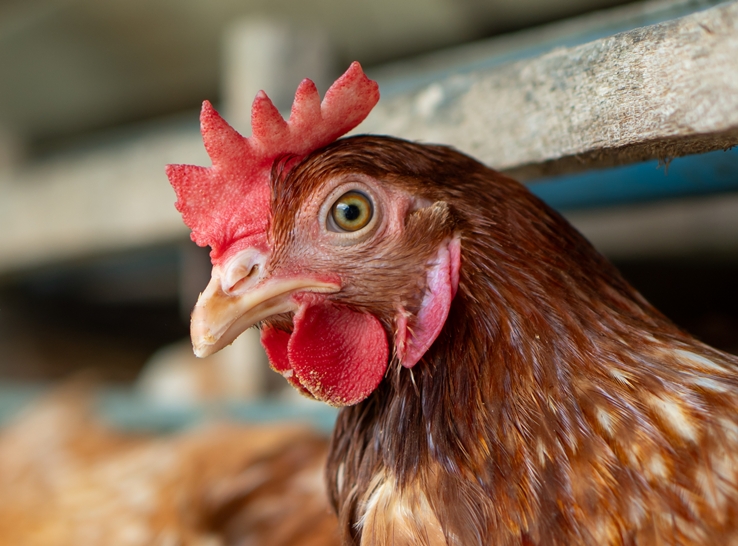By Richard Blatchford, PhD, University of California, Davis
Currently, 38.7% of laying hen housing systems in the United States are cage-free1 and this transition continues to increase. However, little attention has been given to pullet housing systems. Proper management of pullets to prepare them for adult housing leads to adaptable hens that can prosper and provide optimal production and lower mortality (see Poultry Press Vol. 63). This article aims to provide important considerations for pullet management.
Spacing considerations
Surprisingly, there is little research on the space needs of pullets. However, this is a particularly important area, as the size of the pullets changes dramatically as they grow, and their needs may change throughout development. There are two types of space use to consider.
Stocking density
Krause and Shrader2 derived a calculation for the maximum stocking density for white and brown strains of pullets, concluding that 40 – 60% of space in addition to the body size should be provided.
Alternatively, they also recommend 9 – 15 birds/m2 of usable space at the end of the rearing period. Studies in cage free environments have found little effects of stocking density on health and welfare parameters.3,4
Resource space availability
Consideration should also be given to the available space to access resources, such as perches, feeders, waterers, or enrichments. The amount of space needed may change as the pullets age. Pullets were found to reach 71% (white strains) and 77% (brown strains) of full body size by 8wks of age5 suggesting large group sizes may need more resource access.
Pullets often clump together and synchronize their behavior, which should be considered for how much of a resource should be provided or where to place it.6 As adult cage – free environments are often complex, providing enrichment to pullets will help them adapt to their adult housing.7, 8 See Vol. 43 of The Poultry Press for more information on spatial development of pullets.
Behavioral considerations
Fear
Fear is of concern in cage – free environments, as birds are at increased risk of panic, smothering, injury, and mortality.
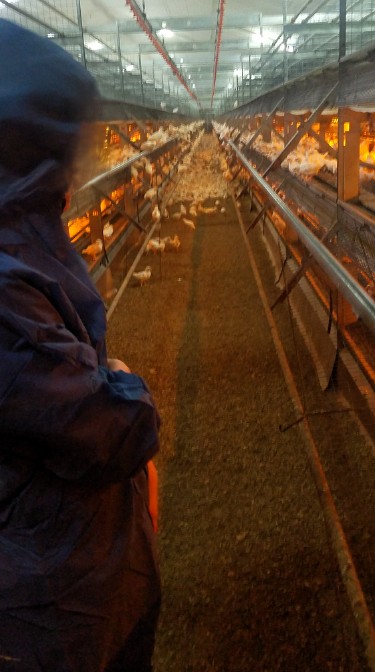
Pullets can be seen moving away from a person. This could be a cause of panic and smothering. The fear reaction can be lessened if pullets are accustomed to humans walking through the barn at a slow steady pace.
Fear development is influenced by genetics and early experience. Environment enrichment and human handling during rearing are shown to decrease fear responses in adult hens.9 Hens reared in cage – free housing showed less fear when exposed to a novel object, compared to hens reared in cages, although they had a more active response (jumping) when tested at 19 weeks of age.10 More research is needed to understand the implications of a change in fear response and its connection to the welfare of pullets.
Feather pecking
Although the causes of feather pecking are multi-factorial, rearing conditions can influence the occurrence in adult flocks. Early nutrition is especially important. Providing more opportunity to engage in feeding and foraging behavior through strategies such as dietary dilution, manipulating the gut microbiome through diet supplementation, or providing nutritional based enrichment, such as pecking blocks, have been associated with less feather pecking.11,12
Housing design consistency
Rearing pullets in a system that most closely resembles their adult housing is beneficial especially if they are moving into a complex housing system like an aviary. Pullets reared with complexity in their environment make better use of aviary structures (including vertical transitions) as adults, lay fewer floor eggs, and have better musculoskeletal development.8,13,14 There are many options for cage-free pullet housing and adult hen housing design. Providing pullets and hens with the most consistent housing design has shown clear benefits with more adaptable hens, lower mortality, and optimal production.
References and further resources
- United Egg https://unitedegg.com/facts-stats/. Accessed 10/17/2025.
- Krause, E.T. and L. Schrader. 2019. Suggestions to derive maximum stocking densities for layer pullets. Animals, 9:348.
- Abraham, M.E., C.I. Robison, P.B.S. Serpa, N.J. Strandberg, M.A. Erasmus, G.S. Fraley, G.F. Erf, and D.M. Karcher. 2024. Cage-free pullets minimally affected by stocking density stressors. Animals, 14:1513.
- Fischer, 2023. The impacts of stocking density on behavior of pullets reared in cage-free housing systems. MS thesis, Purdue University.
- Giersberg, M.F., N. Kemper, J. Hartung, L. Schrader, and B. Spindler. 2017. Determination of body width in brown and white layer pullets by image British Poultry Science. 58:230-235.
- Keeling, L.J., R.C. Newberry, and I. Estevez. 2017. Flock size during rearing affects pullet behavioural synchrony and spatial Applied Animal Behaviour Science. 194:36-41.
- Campbell, D.L.M., E.N. De Haas, and C. Lee. 2019. A Review of environmental enrichment for laying hens during rearing in relation to their behavioral and physiological Poultry Science. 98:9-28.
- Pullin, N., C.B. Rufener, S.T. Millman, J.F. Tarlton, M.J. Toscano, R.A. Blatchford, and M.M. Makagon. 2024. Providing elevated structures in the pullet rearing environment affects behavior during initial acclimation to a layer aviary. Poultry Science. 103:103357.
- Jones, B. 1996. Fear and adaptability in poultry: insights, implications, and imperatives. World’s Poultry Science Journal. 52:131-174.
- Brantsaeter, , J. Nordgreen, T.B. Rodenburg, F.M. Tahamtani, A. Popova, and A.M. Janczak. 2016. Exposure to increased environmental complexity during rearing reduces fearfulness and increases use of three-dimensional space in laying hens. Frontiers in Veterinary Science. 3:14.
- Qaisrani, S.N., M.M. van Krimpen, and R.P. Kwakkel. 2013. Effect of dietary dilution source and dilution level on feather damage, performance, behavior, and litter condition in pullets. Poultry Science. 92:591-602.
- Mens, A.J.W., M.M. van Krimpen, and R.P. Kwakkel. 2020. Nutritional approaches to reduce or prevent feather pecking in laying hens: any potential to intervene during rearing? World’s Poultry Science Journal. 76:591-610.
- Colson, , C. Arnould, and V. Michel. 2008. Influence of rearing conditions of pullets on space use and performance of hens placed in aviaries at the beginning of the laying period. Applied Animal Behaviour Science. 111:286-300.
- Pufall, A. A. Harlander-Matauschek, M. Hunniford, and T.M. Widowski. 2021. Effects of rearing aviary style and genetic strain on the locomotion and musculoskeletal characteristics of layer pullets. Animals. 11:1-20.
To view all issues of Poultry Press, click here.
Editor’s note: Content on Modern Poultry’s Industry Insights pages is provided and/or commissioned by our sponsors, who assume full responsibility for its accuracy and compliance.


